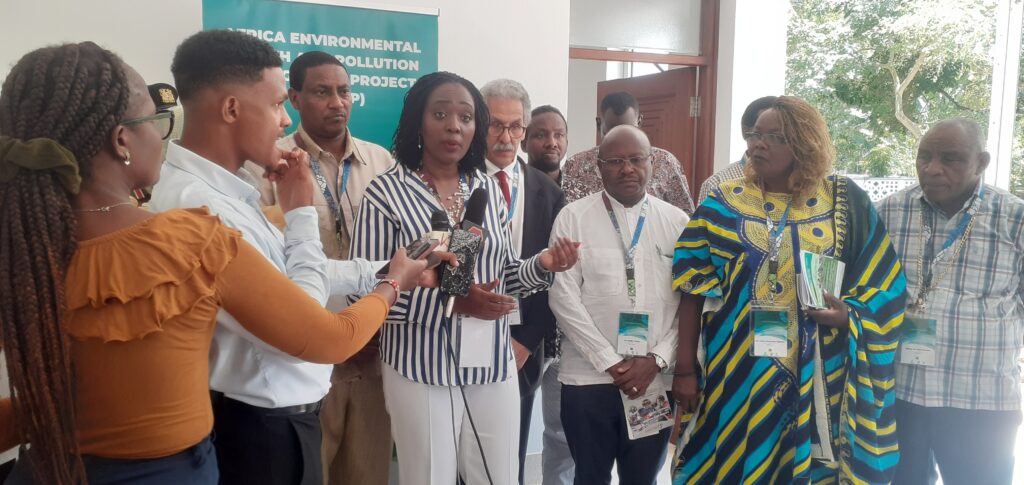By Caroline Katana
The Ministry of Environment, Climate Change, and Forestry has warned of an increase in health problems in the world if the appropriate measures for managing e-waste are not achieved in time.
This comes as Kenya generates 51.3 thousand tons of e-waste per year whereby 99 percent of the waste is not collected nor recycled but dumped in dumping sites.
Speaking during the official opening of the African Environment Health and Pollution Management Programme conference in Mombasa Cabinet Secretary Soipan Tuya said e-waste emission has dangerous effects on the environment and human health.
“Short-term exposure of humans to high levels of Unintentional persistent organic pollutants may result in skin, patchy darkening of the skin and altered liver function while long-term exposure is linked to impairment of the immune system, developing nervous system and reproductive functions, “said the Cs.
CS Tuya confirmed mercury-independent artisanal and small-scale gold mining to be the largest source of mercury pollution on Earth.
“The international use of mercury in artisanal and small-scale gold mining directly impacts the health of millions of people globally, the communities near mines are also affected due to mercury contamination of water and soil which subsequently accumulate in food staples such as fish,” noted the CS.
She affirmed the Kenyan government has made major milestones that are contributing to the promotion of solid waste management.
“We have initiated the process of establishing a demonstrated pilot program for e-waste circular economy at Konza techno polis city on the outskirts of Nairobi which will provide a range of e-waste circular economy arrangements, awareness promotion, innovation research, green jobs creation and promotion of bottom-up economic transformation,“ said Tuya.
She added that the African component on policy dialogue and regulatory enhancement seeks to support the various government’s efforts in strengthening current environmental policies and legislations and facilitate implementation to better address the health risks associated with mercury and Unintentional persistent organic pollutants (uPOPs).
The National Environment Management Authority NEMA Director General Mamo B. Mamo said the rough statistics on e-waste generation are worrying.
“The greatest challenge is the manner in which we are handling the e-waste where most of it is not properly segregated and ends up in open dumpsites where it releases uPOPs on the environment,” he said.
The DG said NEMA continues to offer leadership in the management of e-waste through fast-tracking development of relevant regulatory frameworks and compliance enforcement of the current laws.
NEMA is the executing agency in the noble project in recognizing the value of promoting Mother Nature through the African Environmental Health and Pollution Management project has steered the e-waste agenda in Kenya with great success.
Mombasa County Deputy Governor Francis Thoya confirmed approximately 700 tons of waste dumped at the Mwakirunge dumping site every day.
The Africa Environmental Health and Pollution Management Program (EHPMP) is a five-year regional project covering Kenya, Tanzania, Zambia, Ghana, and Senegal and funded by the Global Environment Facility (GEF) with implementation support from the World Bank.
In Kenya, the EHPMP is implemented by the National Environmental Management Authority (NEMA).
The project aims to strengthen the institutional capacity to manage and regulate unintentional persistent organic pollutants (uPOPs) from electronic wastes (e-waste) and mercury pollution from artisanal small-scale gold mining (ASGM) in these selected countries.
The project is being implemented in four components including, Institutional strengthening, knowledge and capacity building, Policy Dialogue and Regulatory Enhancements, Demonstrating the application of technological tools and economic approaches for reduced environmental health risks due to mercury and e-waste, and Project Coordination and Management.


